Ye Han
GITSR: Graph Interaction Transformer-based Scene Representation for Multi Vehicle Collaborative Decision-making
Nov 03, 2024Abstract:In this study, we propose GITSR, an effective framework for Graph Interaction Transformer-based Scene Representation for multi-vehicle collaborative decision-making in intelligent transportation system. In the context of mixed traffic where Connected Automated Vehicles (CAVs) and Human Driving Vehicles (HDVs) coexist, in order to enhance the understanding of the environment by CAVs to improve decision-making capabilities, this framework focuses on efficient scene representation and the modeling of spatial interaction behaviors of traffic states. We first extract features of the driving environment based on the background of intelligent networking. Subsequently, the local scene representation, which is based on the agent-centric and dynamic occupation grid, is calculated by the Transformer module. Besides, feasible region of the map is captured through the multi-head attention mechanism to reduce the collision of vehicles. Notably, spatial interaction behaviors, based on motion information, are modeled as graph structures and extracted via Graph Neural Network (GNN). Ultimately, the collaborative decision-making among multiple vehicles is formulated as a Markov Decision Process (MDP), with driving actions output by Reinforcement Learning (RL) algorithms. Our algorithmic validation is executed within the extremely challenging scenario of highway off-ramp task, thereby substantiating the superiority of agent-centric approach to scene representation. Simulation results demonstrate that the GITSR method can not only effectively capture scene representation but also extract spatial interaction data, outperforming the baseline method across various comparative metrics.
An Applied Deep Learning Approach for Estimating Soybean Relative Maturity from UAV Imagery to Aid Plant Breeding Decisions
Aug 02, 2021

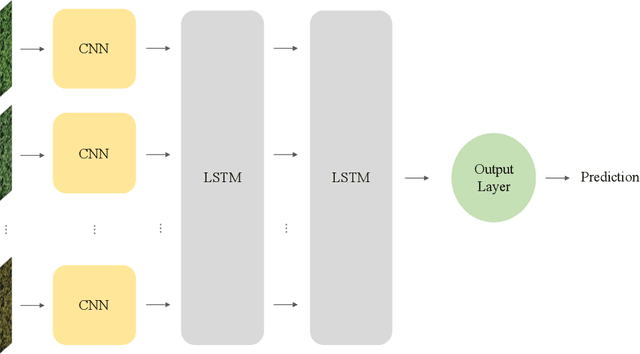

Abstract:For a global breeding organization, identifying the next generation of superior crops is vital for its success. Recognizing new genetic varieties requires years of in-field testing to gather data about the crop's yield, pest resistance, heat resistance, etc. At the conclusion of the growing season, organizations need to determine which varieties will be advanced to the next growing season (or sold to farmers) and which ones will be discarded from the candidate pool. Specifically for soybeans, identifying their relative maturity is a vital piece of information used for advancement decisions. However, this trait needs to be physically observed, and there are resource limitations (time, money, etc.) that bottleneck the data collection process. To combat this, breeding organizations are moving toward advanced image capturing devices. In this paper, we develop a robust and automatic approach for estimating the relative maturity of soybeans using a time series of UAV images. An end-to-end hybrid model combining Convolutional Neural Networks (CNN) and Long Short-Term Memory (LSTM) is proposed to extract features and capture the sequential behavior of time series data. The proposed deep learning model was tested on six different environments across the United States. Results suggest the effectiveness of our proposed CNN-LSTM model compared to the local regression method. Furthermore, we demonstrate how this newfound information can be used to aid in plant breeding advancement decisions.
High-Throughput Image-Based Plant Stand Count Estimation Using Convolutional Neural Networks
Oct 23, 2020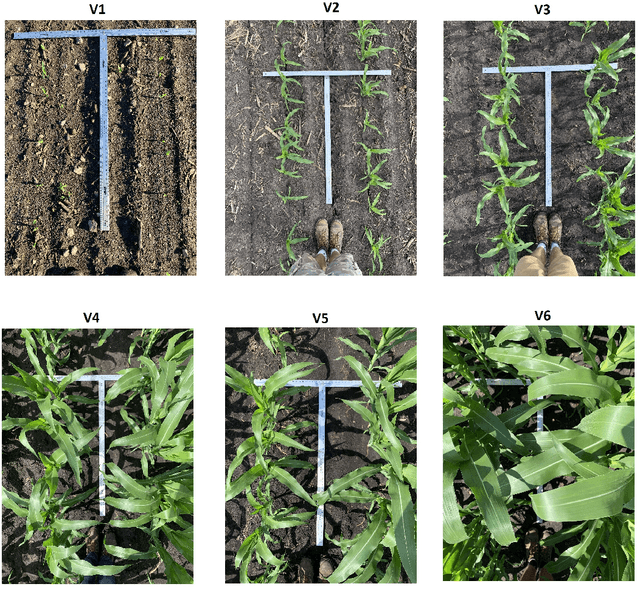
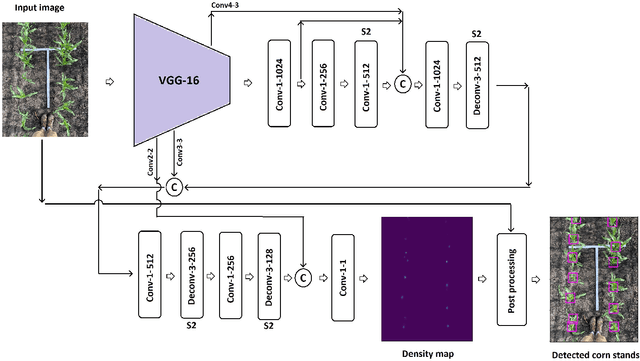
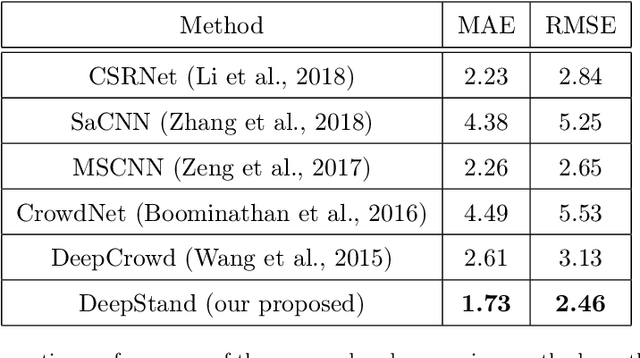
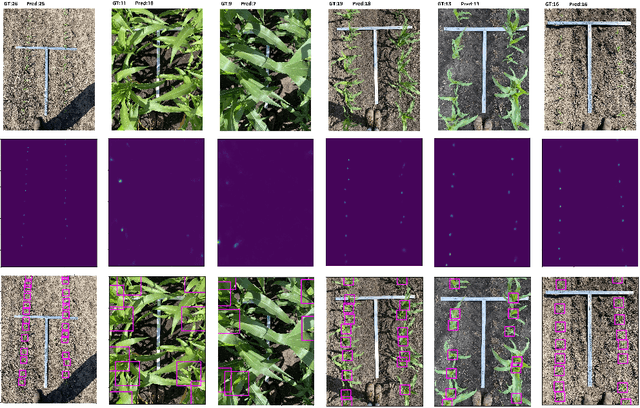
Abstract:The future landscape of modern farming and plant breeding is rapidly changing due to the complex needs of our society. The explosion of collectable data has started a revolution in agriculture to the point where innovation must occur. To a commercial organization, the accurate and efficient collection of information is necessary to ensure that optimal decisions are made at key points of the breeding cycle. However, due to the shear size of a breeding program and current resource limitations, the ability to collect precise data on individual plants is not possible. In particular, efficient phenotyping of crops to record its color, shape, chemical properties, disease susceptibility, etc. is severely limited due to labor requirements and, oftentimes, expert domain knowledge. In this paper, we propose a deep learning based approach, named DeepStand, for image-based corn stand counting at early phenological stages. The proposed method adopts a truncated VGG-16 network as a backbone feature extractor and merges multiple feature maps with different scales to make the network robust against scale variation. Our extensive computational experiments suggest that our proposed method can successfully count corn stands and out-perform other state-of-the-art methods. It is the goal of our work to be used by the larger agricultural community as a way to enable high-throughput phenotyping without the use of extensive time and labor requirements.
DeepCorn: A Semi-Supervised Deep Learning Method for High-Throughput Image-Based Corn Kernel Counting and Yield Estimation
Jul 20, 2020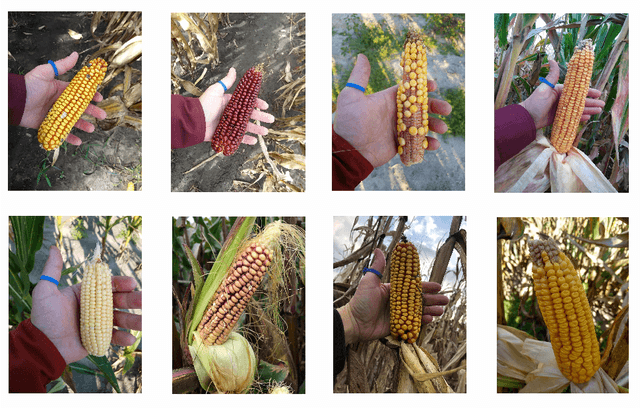

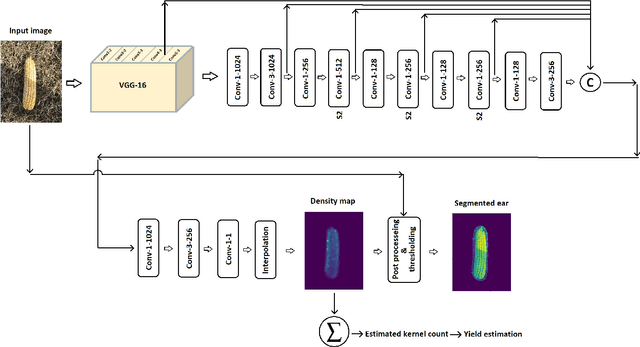
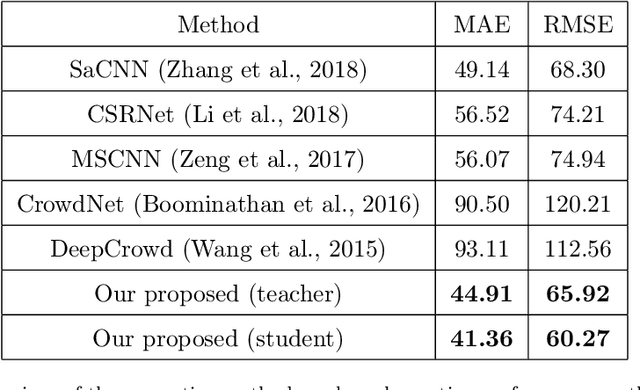
Abstract:The success of modern farming and plant breeding relies on accurate and efficient collection of data. For a commercial organization that manages large amounts of crops, collecting accurate and consistent data is a bottleneck. Due to limited time and labor, accurately phenotyping crops to record color, head count, height, weight, etc. is severely limited. However, this information, combined with other genetic and environmental factors, is vital for developing new superior crop species that help feed the world's growing population. Recent advances in machine learning, in particular deep learning, have shown promise in mitigating this bottleneck. In this paper, we propose a novel deep learning method for counting on-ear corn kernels in-field to aid in the gathering of real-time data and, ultimately, to improve decision making to maximize yield. We name this approach DeepCorn, and show that this framework is robust under various conditions and can accurately and efficiently count corn kernels. We also adopt a semi-supervised learning approach to further improve the performance of our proposed method. Our experimental results demonstrate the superiority and effectiveness of our proposed method compared to other state-of-the-art methods.
Convolutional Neural Networks for Image-based Corn Kernel Detection and Counting
Apr 20, 2020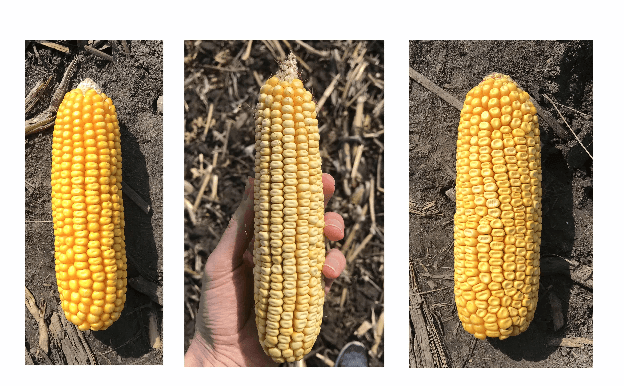
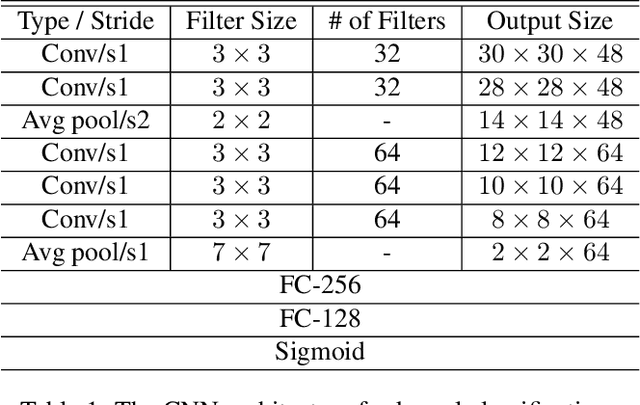
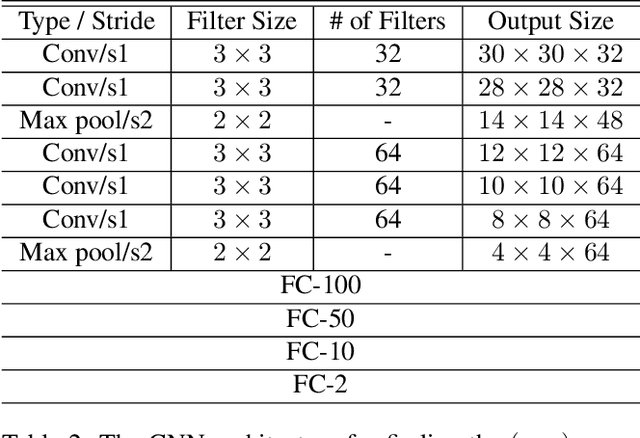
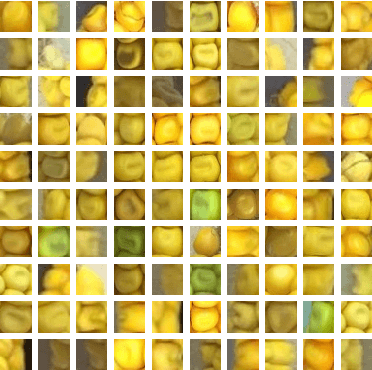
Abstract:Precise in-season corn grain yield estimates enable farmers to make real-time accurate harvest and grain marketing decisions minimizing possible losses of profitability. A well developed corn ear can have up to 800 kernels, but manually counting the kernels on an ear of corn is labor-intensive, time consuming and prone to human error. From an algorithmic perspective, the detection of the kernels from a single corn ear image is challenging due to the large number of kernels at different angles and very small distance among the kernels. In this paper, we propose a kernel detection and counting method based on a sliding window approach. The proposed method detect and counts all corn kernels in a single corn ear image taken in uncontrolled lighting conditions. The sliding window approach uses a convolutional neural network (CNN) for kernel detection. Then, a non-maximum suppression (NMS) is applied to remove overlapping detections. Finally, windows that are classified as kernel are passed to another CNN regression model for finding the (x,y) coordinates of the center of kernel image patches. Our experiments indicate that the proposed method can successfully detect the corn kernels with a low detection error and is also able to detect kernels on a batch of corn ears positioned at different angles.
 Add to Chrome
Add to Chrome Add to Firefox
Add to Firefox Add to Edge
Add to Edge